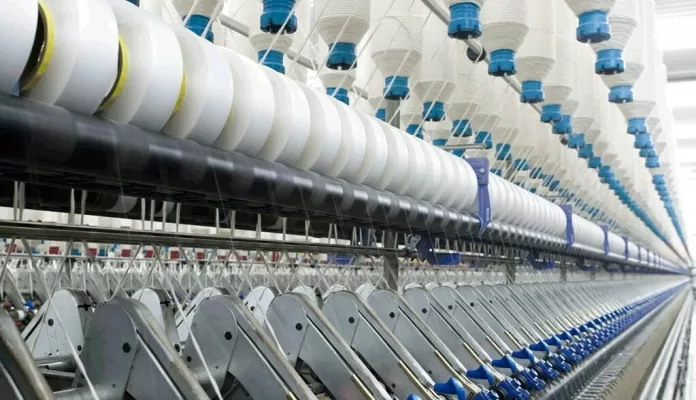Pakistan’s continued reliance on imported fossil fuels and old coal technology has hurt the country’s energy security and its ability to meet global requirements for energy efficiency and decarbonization. This is because Pakistan’s energy demand is not being managed in a way that is sustainable.
But the government’s recent move to improve the country’s ability to use renewable energy (RE) is a big step forward in terms of laws and policies.
In the updated National Climate Change Policy, 2021, energy efficiency and reducing carbon emissions are two of the most important ways to reach goals for reducing climate change. Its goal is to find new ways to use the country’s potential for renewable energy. It also says that by 2030, 60% of all the energy made in the country will come from clean, renewable sources, and that Pakistan will no longer try to build coal power plants.
Also, Pakistan’s updated Nationally Determined Contributions (NDCs), 2021, back the government’s energy policy changes and make it a high priority to use renewable energy sources in all major sectors. The updated Renewable Energy Policy for 2019 puts more emphasis on green energy and uses the Kyoto Protocol to try to cut down on GHG emissions.
Pakistan has a lot of solar, wind, hydro, geothermal, and biomass resources, which give it a lot of potential to meet its growing energy needs with renewable energy sources. Solar, for example, is the most appealing alternative energy source that has gotten a lot of attention lately. The southwest part of Pakistan gets the most radiation.
“The annual global horizontal irradiance in the Himalayas and Karakoram is 2300 kWh/m2, which is more than any other place on Earth.” Sources of wind energy have the potential to make 43,000 MW of electricity. Also, the International Renewable Energy Agency (IRENA) says that Pakistan’s hydropower sector has a 60GW potential and is still one of the cheapest ways to get electricity in the country.
Biomass is thought to produce 50,000 Gwh of electricity every year in the country. Lastly, all of the provinces have geothermal energy sources that can be used to make electricity, heat and cool buildings, and provide hot water.
If Pakistan uses this untapped potential in all the major sectors by fully implementing the exemplary policy reforms and expanding RE, a huge amount of growth can be uncoupled from traditional energy sources like fossil fuels. This can help with climate resilience efforts that are already in place.
A report from the World Bank says that expanding renewable energy will make electricity cheaper, increase energy security, and save Pakistan up to $5 billion over the next 20 years.
The textile industry in Pakistan is a big one that can get a lot of help from the renewable energy resources in the country while getting clean power.
SECTOR RE AND TEXTILE
The processes used to make textiles use a lot of energy. 10% of the world’s greenhouse gas emissions come from making clothes and shoes. GHGs are released into the atmosphere when raw materials are made, harvested, dyed, and when used textiles are dumped. All of these are important steps in making textiles and getting rid of them.
Pakistan’s textile industry can save money and resources by switching to renewable energy solutions. This also helps the industry meet global standards for energy efficiency and industrial decarbonization, like those set by the European Green Deal.
There are already opportunities for the industry to grow through renewables, such as government support, a growing market for renewable energy, and improvements in technology. Pakistan’s government has helped to develop renewable energy, and it encourages the private sector to take part in projects that reduce carbon emissions.
The textile industry can be a leader in this area if it plans wisely and sets aside enough money to set up independent, long-lasting electricity. Also, RE technologies are becoming more affordable as ways to power industry, which can help make the manufacturing process more cost-effective.
The progress the industry has made so far in offsetting emissions shows that it is committed to getting to net zero by adopting a green supply chain philosophy. For example, the “Net Zero Pakistan” initiative is the largest “net zero” coalition in Pakistan and the only other country-wide programme in the Global Race to Zero after Japan.
Non-government organisations, leading textile companies, public institutions, and experts in the field are all working together on it. In this coalition, the textile companies agree to set science-based net-zero goals, measure and report their greenhouse gas (GHG) emissions, decarbonize their supply chains, and push for climate action.
Taking into account both outside pressure and internal needs for energy efficiency, the initiative must help with decarbonization by increasing the mix of renewable energy and putting in technologies that save energy.
Major textile companies are helping to fight climate change by taking part in clean energy projects and installing technologies like waste heat recovery boilers and boilers that run on biomass fuels.
Energy conservation is done by getting international certifications like LEED, and water stewardship is done by using sustainable bleaching techniques, not letting any wastewater out, and recycling water. Figure 1 shows a comparison of how well one of the companies, Sarana Textile Industries, has done.
Based on an analysis of the current state of energy efficiency in industry, it is clear that renewable electricity and biomass are not used as much as they could be. Motors and boilers don’t work as well as they could, and new ways to save energy aren’t used well enough.
So, the best way for the industry to cut down on carbon emissions and save energy is to switch to renewable energy technologies like solar photovoltaic (PV), concentrated solar thermal collectors, and wind turbines. Circular economy options including recover, recycle and re-use must be compounded by rethinking process improvement options and innovative technologies via right financial allocations and research breakthroughs.
Figure 1: A comparison of how well Sarena Textile Industries has done.
When the RE technology is used, the industry can get a Renewable Energy Certificate (REC). RECs are issued when one megawatt-hour (MWh) of electricity is generated and delivered to the electricity grid from a renewable energy resource. Pakistan has been approved for International-REC (I-REC) for electricity issuance. The I-REC for electricity issuer in Pakistan is the Pakistan Environment Trust (PET). RECs are units that can be bought and sold on exchanges or between two parties. They can be a big source of extra revenue.
LEGISLATIVE CHALLENGES AND THE WAY FORWARD
The industry is currently experiencing a number of barriers obstructing its transition to RE resources, that demand an immediate response from the government.
The limit of the present net-metering scheme for solar power systems of the industry is 1MW, which needs to be extended to 5MW – “especially when the demand of the large-scale manufacturing industry is between 1.5 to 5MW. This increase has a potential to add 5000MW of solar energy at no upfront investment from the GoP to the energy mix of the country. Also, this will make the EOUs more competitive on the international market (because they will have lower energy costs) and increase the share of renewable energy in the total energy mix, as promised in the updated NDCs 2021.
Further, the government has planned to launch solarisation projects of around 14000MW which will not only “reduce the import bill of costly fuel but also help generate low-cost and environment-friendly electricity.” These solar systems will be provided at reduced prices and will be given tax incentives. However, in order to support the industry to enhance its energy efficiency in a sustainable and an independent manner, it should be permitted to install its own solar power structures with the extension of net-metering scheme for solar from 1MW to 5MW.
The wheeling case indicates that Pakistan needs to move towards free market models with multiple buyers and sellers to revive power sector but also, to make it transparent. The wheeling regulations must incorporate wheeling of renewable energy and the associated wheeling cost must be reduced for any industrial off-site installation of renewable power infrastructure.
These legislative burdens, coupled with the withdrawal of regionally competitive energy tariffs, are pushing the industry into a zone of financial dismay where it is operating at lower capacity utilization due to working capital issues, losing competitiveness in the international market, and raw material issues. This will cause long-lasting harm to the industry’s current compliance and sustainability efforts and adoption of RE technology, as the present focus has shifted towards another day survival by mitigating the impacts of withdrawal of energy tariffs.





